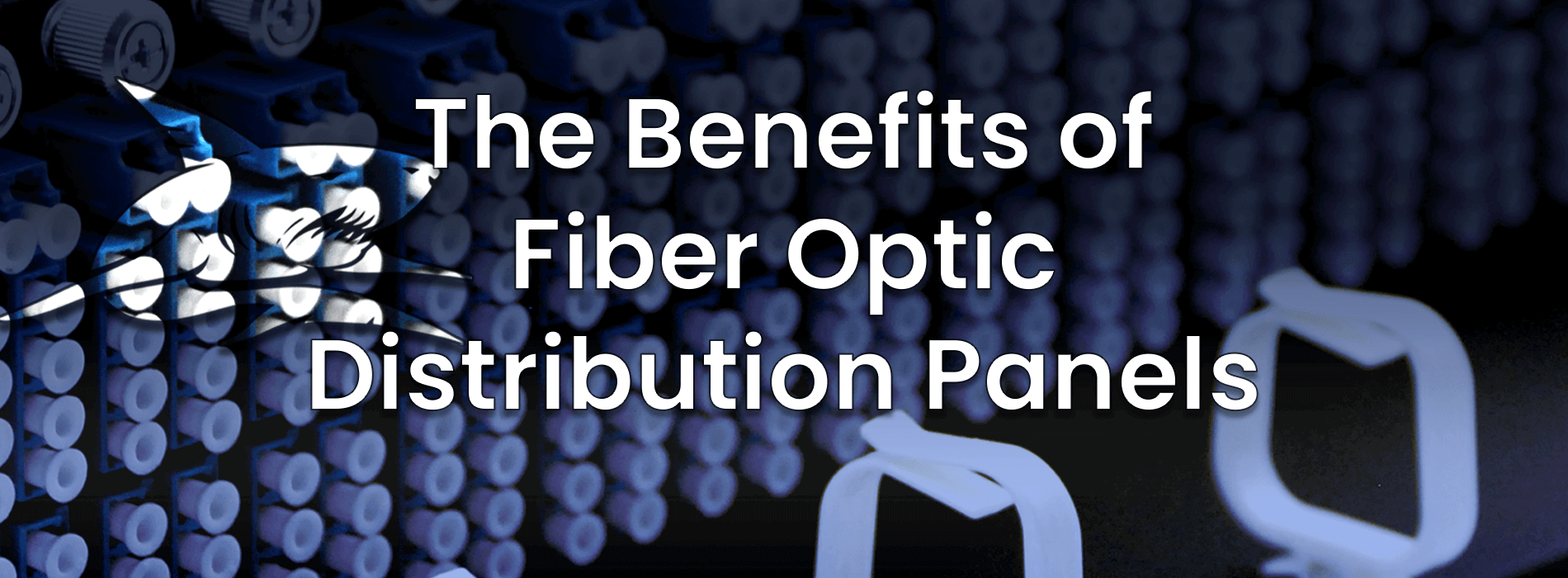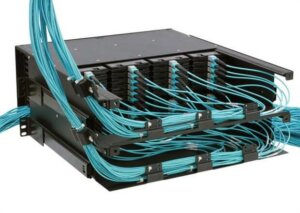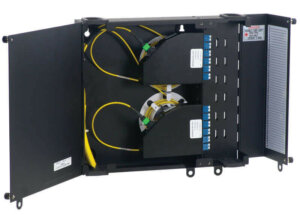
The Benefits of Fiber Optic Distribution Panels
The fiber optic distribution panel is your best solution to organize and manage fiber optic cables within an enterprise network.
What is a Fiber Optic Distribution Panel?
The fiber optic distribution panel is the nerve center for any high-density network. Also called a fiber enclosure, the fiber optic distribution panel is your best solution to organize and manage fiber optic cables within an enterprise network. A single distribution panel hardware assembly contains a set number of ports to connect incoming and outgoing optical cables. Each port connects fiber jumper cables to another port located elsewhere. Using these assemblies, circuits within a network can be easily rearranged, repaired, or replaced.
Distribution panels are available in two versions: rack mount distribution panels and wall mount distribution panels. Both are capable of securing, organizing, and protecting fiber optic cables, splices, and connectors.

A rack mount fiber enclosure is usually designed for the standard 19-inch rack frame used in most data centers or telecommunication closets. All units are 19” wide, and some have 23” brackets for larger racks. Panels come in a variety of vertical footprints, generally specified as a rack unit (RU). For instance, a 1RU rack mount is 1.75” high and a 2RU rack mount is 3.50” high. However, depending on the number of connections, rack mounts can go up to 42RU (about 73 inches, the height of the full rack frame). 1RU, 2RU and 4RU are the most common sizes readily available.
 A wall mount fiber enclosure features a more low-profile, compact design. Wall mount panels are a great choice for securing and protecting your fiber network in areas where space may be limited. Wall mount panels are designed to be fixed onto a wall where cable is entering a premises or termination point. Just as in a rack mount version, they provide a network termination point while maintaining organization and protection from damage.
A wall mount fiber enclosure features a more low-profile, compact design. Wall mount panels are a great choice for securing and protecting your fiber network in areas where space may be limited. Wall mount panels are designed to be fixed onto a wall where cable is entering a premises or termination point. Just as in a rack mount version, they provide a network termination point while maintaining organization and protection from damage.
Function and Features of a Fiber Distribution Panel
Distribution panels play an important role in the administration of many high-density telecommunication networks. In most data centers, for instance, fiber optic distribution panels are stacked on top of each other in a server rack frame or mounted to the wall. This practice helps eliminate unnecessary clutter of wires and provides quicker access for maintenance when performing installations, repairs, or replacements.
An essential feature of the distribution panel is the splice tray. When a fiber cable enters a distribution panel, the cable is fanned-out and individual strands of glass are separated inside the splice tray. Technicians can then splice fiber pigtails with connectors on them to the individual strands of fiber. The fiber splice tray provides a place to store the individual fiber strands and keep them from getting damaged. The pre-terminated pigtails are plugged into the fiber adapter panels mounted in the distribution box, creating a termination point for the bulk fiber.
Another critical part of a fiber optic enclosure is the fiber optic adapter panel. These adapter panels help to organize and secure the fiber optic adapter which connects to a patch cord inside the enclosure. These adapter panels come in different sizes and colors, and can be manufactured to fit to any rack or wall mount enclosure form factor.
Businesses deploy fiber optic distribution panels in several different environments such as offices, schools, and hospitals. By understanding the role these enclosures play, you can help to better determine the specific product that works well in the application. Key design parameters include fiber counts, connector types, and footprint restrictions of the panel.
What are the benefits of distribution panels?
Without a doubt, fiber optic distribution panels are indispensable for the administration and organization of most high-density fiber optic networks. Some other significant benefits of distribution panels include:
- Modular design: ensures all the panels and associated parts are interchangeable. This reduces installation and maintenance costs, enabling for quick and easy installation of structured cabling.
- Scalability: After installing a distribution panel, you can easily add new devices on demand, without the costly hassle of replacing cables end-to-end.
- Reduction Cable Congestion: Less cable clutter means less confusion and an easily organized network infrastructure.
- Cost Effectiveness: With a low initial investment, distribution panels provide easy maintenance for a high-density network. You only need to purchase the device currently needed, and still leave room for future expansion.
- Space Savings: By managing various connections in a single high-density network, you can save valuable rack space.
- Ease of maintenance: The distribution panel allows for monitoring, testing, switching, routing, and other maintenance to be handled quickly. Cables can be configured so that changes are quick when needed.
To sum up, the fiber distribution panel makes it easy to organize the fiber cables in a high-density network. In addition, performing maintenance within a fiber optic distribution panel protects fiber cables from physical damage.
The Megladon Difference
With several fiber optic distribution panels available for sale, businesses can be puzzled over what to select. Located in Austin, TX, Megladon Manufacturing offers a wide range of fiber optic distribution panels from rack mount to wall mount enclosures. We are also happy to offer custom services, which can help address all your specific requirements. For more details, contact us at (512) 491-0006 or click here to reach out to our team through our website.

